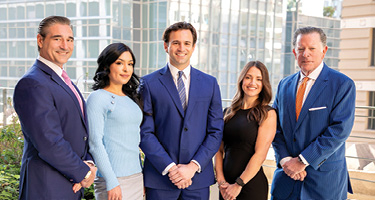Pro bono work in the United States declined in 2024, a new Best Law Firms® survey shows, with fewer lawyers and law firms meeting the profession’s minimum hourly goals for serving clients who cannot afford to pay for critical legal services.
Best Law Firms annually collects data on pro bono activities as part of its annual survey of the U.S. legal market. Nearly 4,800 law firms—ranging in size from global megafirms to solo practices—responded to the survey’s pro bono questions. Many also provided their annual pro bono hours.
On average, those firms performed 2,086 hours of pro bono work last year, a decline of 15% from Best Law Firms’ previous survey. Among firms with 20 or more lawyers, median pro bono hours slid from 1,162 to 1,000 per firm.
It appears unlikely pro bono hours will recover this year. A wave of executive orders and threats of regulatory and legal action by the Trump administration against major law firms has resulted in a number of firms pulling back on their pro bono efforts.
50-Hour Goal
The American Bar Association’s Model Rules of Professional Conduct establish a professional responsibility for lawyers to perform pro bono work and that they should “aspire to render at least 50 hours” per year of legal services for free. A substantial majority of those hours should be dedicated “to persons of limited means.”
Of the firms Best Law Firms surveyed, 776 provided the total number of pro bono hours they performed last year, a 5% increase over its previous survey. The firms in this group employed an average of 81 lawyers.
Among those firms, 226 had per-lawyer hourly averages that matched or exceeded the ABA’s 50-hour recommendation. While those firms represent just 29% of the firms responding to the survey, they accounted for 45% of all pro bono hours performed.
The survey results are anonymous. Yet, the data shows that the highest hours per lawyer were recorded by a California solo practitioner who logged 1,000 hours of pro bono time in 2025. A two-lawyer Oklahoma firm ranked second with 900 pro bono hours per attorney. In third place was an 81-attorney New York firm that performed 66,000 hours of pro bono work overall, or just under 815 hours per lawyer.
Missing the Mark
Collectively, law firms taking the survey performed 1.6 million hours of pro bono work last year. Those firms employ 62,539 lawyers. To meet the ABA’s 50-hour goal, however, firms would have needed to nearly double their pro bono workload to 3.1 million hours.
Smaller firms came closest to meeting the ABA’s goal. The only group of firms that exceeded 50 hours per lawyer were solo practices, where attorneys averaged 108 pro bono hours. Two-thirds of the solo firms Best Law Firms surveyed topped the 50-hour mark. Despite that accomplishment, the overall number of hours performed by solo firms in the survey—12,724—represented just 1% of all work performed.
Firms with fewer than 20 lawyers (excluding solo practitioners) clocked 36 hours per attorney. Those with 20-49 lawyers recorded 19 hours and firms of 50-149 lawyers delivered 28 pro bono hours per lawyer.
Not surprisingly, the largest players surveyed contributed the most hours overall. Firms with more than 150 lawyers contributed 75% of all hours performed—1.2 million—last year. On a per lawyer basis, however, the largest firms averaged just 25 hours per lawyer or half of the ABA’s recommendation for practicing attorneys.
Political Pressures
Because of their scale, large law firms can devote the human and financial capital needed to tackle complex cases and address systemic justice issues for underserved communities. Their capacity also allows for more impactful projects than many smaller firms can manage alone.
Big law firms have also developed the infrastructure to handle major pro bono matters and to encourage lawyers to take on significant pro bono activities. The Best Law Firms survey found that 87% of firms with 150-plus lawyers have established a formal pro bono program. At midsize firms of 50 to 149 lawyers, 70% have formalized their pro bono efforts. The numbers decline to 43% at firms of 20-49 lawyers and 22% at firms with fewer than 20 lawyers (excluding solo practitioners).
But the appetite large firms have had for mounting high-impact pro bono projects has been eroding in 2025. Over the summer, Pro Publica, Reuters, CNN, Law.com and other news outlets reported that major law firms have declined to extend pro bono legal support to vulnerable litigants in politically sensitive areas like immigration. That comes in the wake of President Donald Trump’s well-publicized efforts to punish law firms that have worked for clients who opposed him and his administration’s allies.
Reuters found that the administration’s crackdown on firms “is undermining legal defenses for the vulnerable.” Based upon interviews with dozens of lawyers and legal nonprofit leaders, reviews of major law firm websites and analysis of millions of court records, Reuters reported that “dozens of major law firms, wary of political retaliation, have scaled back pro bono work, diversity initiatives and litigation that could place them in conflict with the Trump administration.”
Pro Bono Benefits
Until the recent political uncertainty, firms have long understood that a steady stream of pro bono matters can not only help them uphold the legal profession’s core public service values but can also serve to indirectly boost revenue and support the firm’s business goals.
Pro bono work attracts associates and lateral partners, helps firms retain key partners and associates, provides training and professional development opportunities for lawyers, builds mentoring relationships between partners and associates, enhances morale and can serve as a centerpiece of the firm’s marketing efforts. A successful pro bono program can boost a firm’s credibility, raise its profile, improve client relationships and aid in generating new business.
Given the potential impact on the firm’s business prospects, it’s not surprising that most firms incentivize lawyers to take on pro bono work. Among firms responding to the Best Law Firms survey, 77% said they encourage partners to participate in pro bono work and 75% allow lawyers to select and work on their own pro bono matters.
Roughly half of firms offer billable hour credits for pro bono work. One-third of firms offer an unlimited number of credits and 14% place a cap on the number of hours that can be counted toward a lawyer’s billable hour goals. On average, firms of 150-plus lawyers allowed 85 hours of billable credit last year. Firms with 50-149 lawyers offered 73 hours; 20-49-lawyer firms gave lawyers 20 hours of credit. Firms with 2-19 lawyers accepted 21 credit hours.
Sustainability and Social Responsibility
Best Law Firms also asked respondents about their environmental, social and governance (ESG) activities—work that often goes hand in hand with firms’ pro bono efforts. The survey asked law firms whether they have formal structures in place to assist with corporate sustainability or social responsibility issues.
Following the lead of their corporate clients, some law firms are pursuing sustainability efforts to help firms mitigate any long-term, negative effects the business may create. These often focus on environmental concerns.
At one Am Law 100 firm, for instance, a sustainability committee oversees comprehensive recycling programs, composting services, waste reduction and reuse efforts. It also guides the firm in purchasing renewable energy certificates to offset carbon emissions and in seeking office space in environmentally friendly buildings.
Diverse Approaches
Formal corporate sustainability efforts are rare, however. Just 1.6% of firms have established corporate sustainability committees and 1% have corporate sustainability programs. Less than one-half of 1% have hired a full-time professional to manage corporate responsibility at their firms.
Where sustainability focuses on the future, social responsibility efforts tend to focus on current issues in the communities where lawyers and staff live and work. At another Am Law 100 firm, a formal social responsibility program is comprised of a charitable foundation, scholarship program, paid fellowship for law students to work at nonprofit organizations, thought leadership on public service and social impact issues, fundraising for various causes and opportunities for lawyers and staff to volunteer in their communities.
Social responsibility programs, committees and training are somewhat more widespread at U.S. firms—though hardly ubiquitous. Seven percent of firms have a committee or social responsibility training and 6% have a formal firmwide program. Just 3% of firms said they have hired a social responsibility professional or officer.
---
David L. Brown is a legal affairs writer and consultant, who has served as head of editorial at ALM Media, editor-in-chief of The National Law Journal and Legal Times and executive editor of The American Lawyer. He consults on thought leadership strategy and creates in-depth content for legal industry clients and works closely with Best Law Firms as senior content consultant.














